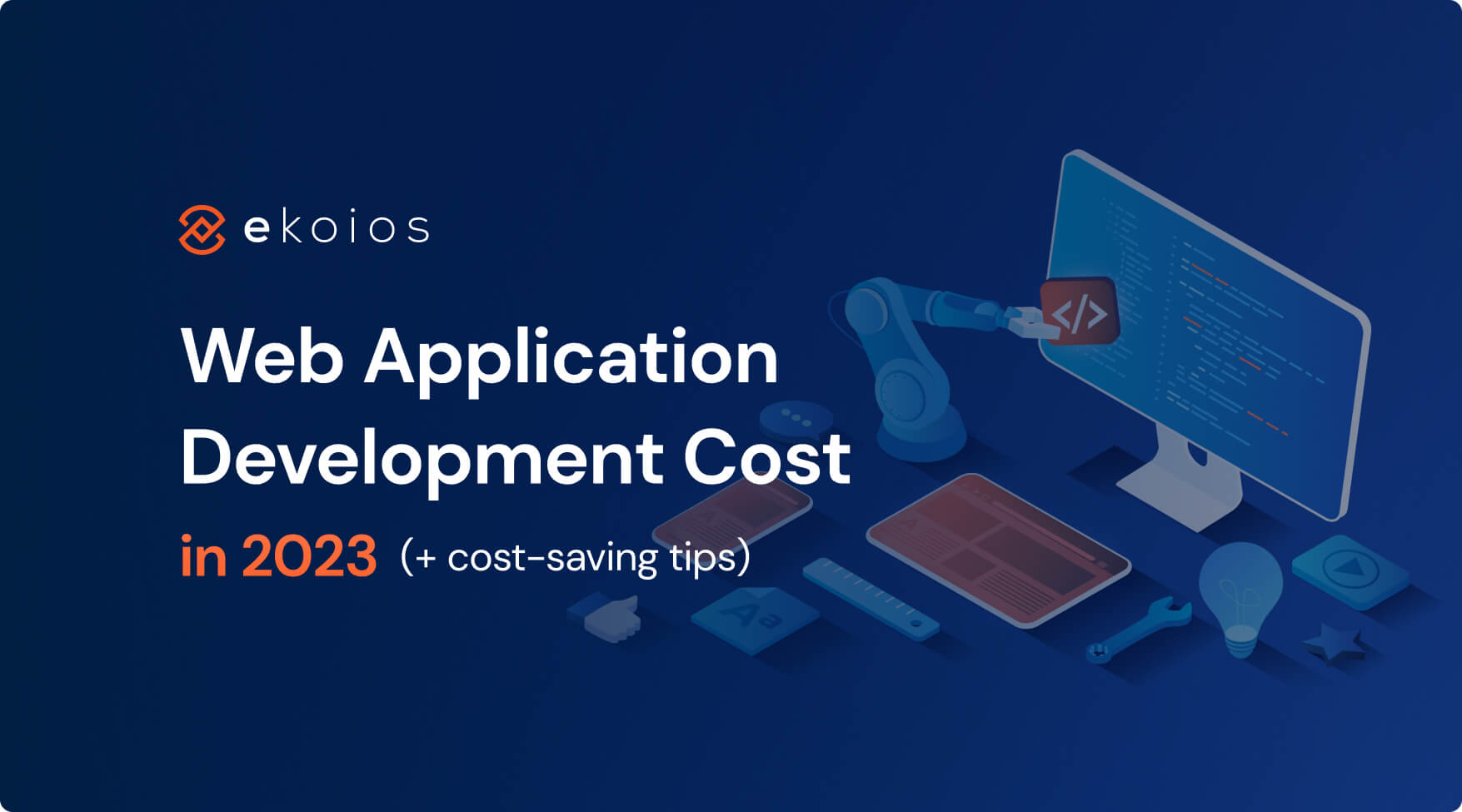
- 1
- 2
- 3
- 4
- 5
- 6
If you come here for a precise figure or a price list, then sorry, you won’t find one. As each web application has a unique set of requirements, it has to be met with a tailored approach, solution, and quote. But fret not, this article will explain in detail the development process, affecting factors to web app development cost, and budget-saving tips – so you don’t have a spend a fortune developing the next big thing!
First, why would you need a web application?
Let’s start by defining web applications. They are software programs that run on a web server and can be accessed through a web browser. Unlike static websites, which only display information, web applications allow users to interact with the website and perform specific tasks or actions.
🔎 Examples of popular web apps include social media platforms like Facebook and Twitter, e-commerce sites like Amazon and eBay, and productivity tools like Google Docs and Trello.
The web application is the ideal choice for the majority of app builders because of their unrivaled nature:
- They work on any device that supports web browsing: PC, Linux, Android, Mac, or iOS.
- They are internet-based and easy to access. Users don’t have to download anything onto their devices and can simply log in from anywhere with an internet connection.
- Unlike mobile apps, web applications do not require app store approval – a lengthy process with monthly fees involved.
- With only one codebase to manage, you save significant effort for development.
Factors affecting the development costs for web applications
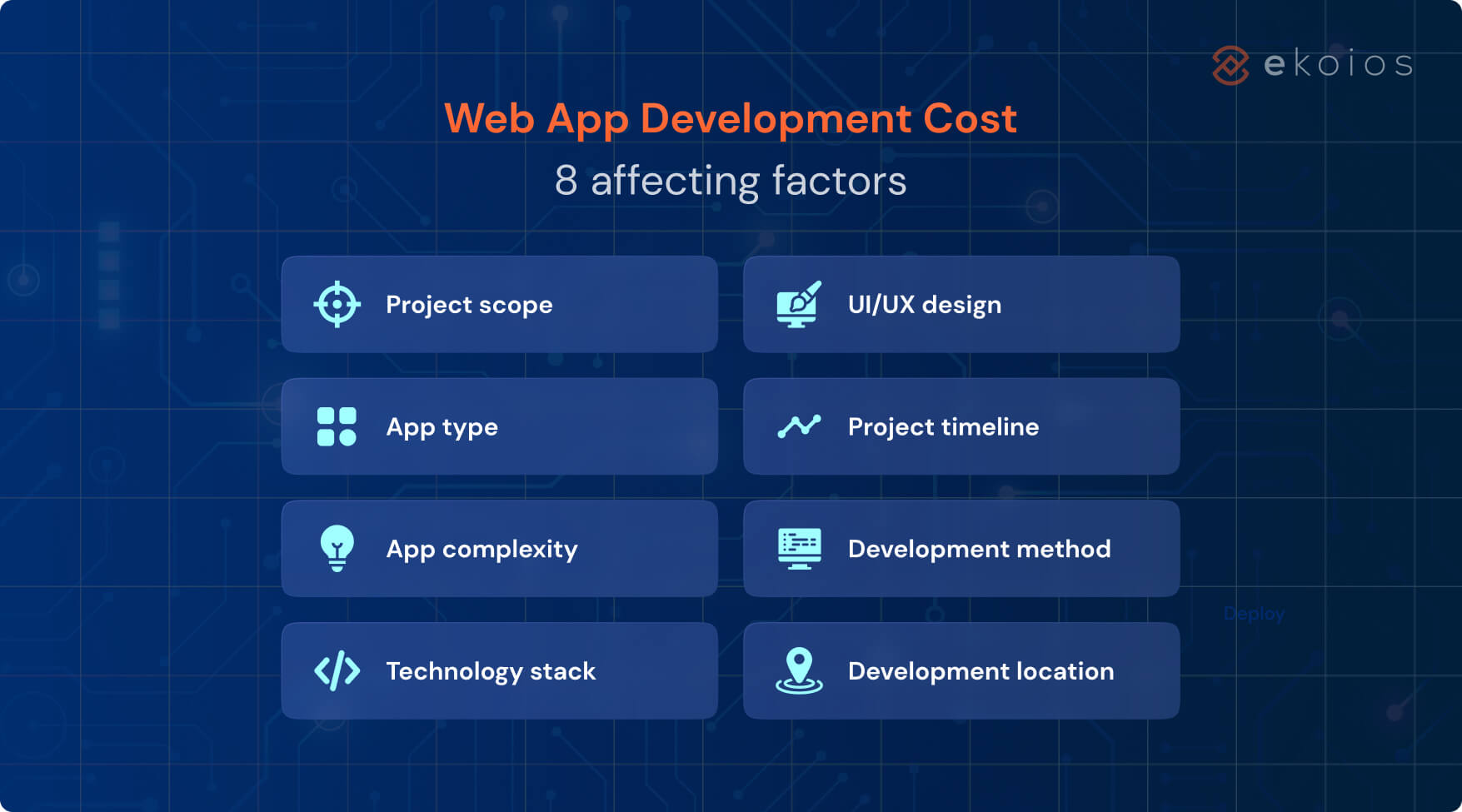
1. Project scope
A web app is not just a piece of code, but the end result of a multi-functional team. If you choose to develop one from scratch, here are the main stages of the software development lifecycle – each requires specialized talents.
| Stage | Main PIC | Task Description |
|---|---|---|
| Initial Research and Discovery | Project Manager Business Analyst | Understand the market, audience and competition to define the app requirements |
| UI/UX Design | Product Designer | Create the wireframes, flows and prototypes for the app’s user interface and experience |
| Copywriting | Copywriter | Produce the text content to be displayed in the application |
| Frontend Development | Frontend Developer | Build the app’s user interface based on designs from the previous stage |
| Backend Development | Backend Developer | Build the app’s infrastructure like database, server, API & more. |
| Web App Testing and Deployment | QA Engineer | Check for bugs, errors or any other issues with functionality or performance before launching the app. |
| Post Deployment Maintenance and Updates | Varies | Fix bugs and update app features based on feedback. |
2. Web App Types
There are three main types to choose from: multi-page applications (MPAs), single-page applications (SPAs), and progressive web apps (PWAs).
🔸 Multi-page applications (MPAs):
- Web app development cost: $$$
- The default choice if you want to build a web app. Different features of an MPA live on different pages, which means that clicking on a button or link initiates a request for a new page to load. This perfectly suits the needs of E-commerce, education, medical businesses, or any other with a lot of information to display.
🔸 Single-page applications (SPAs)
- Web app development cost: $
- All information and functionality will be accessed on one page only. Ideal for websites that prioritize fast loading time, as button clicking doesn’t refresh the page.
🔸 Progressive web apps (PWAs)
- Web app development cost: $$
- Apps that combine the functionality of both web and native applications. For example, users can access the device’s hard drive, go offline, send push notifications, etc.
Read more: Native apps vs. Hybrid apps: Unlock the benefits and make the right choice
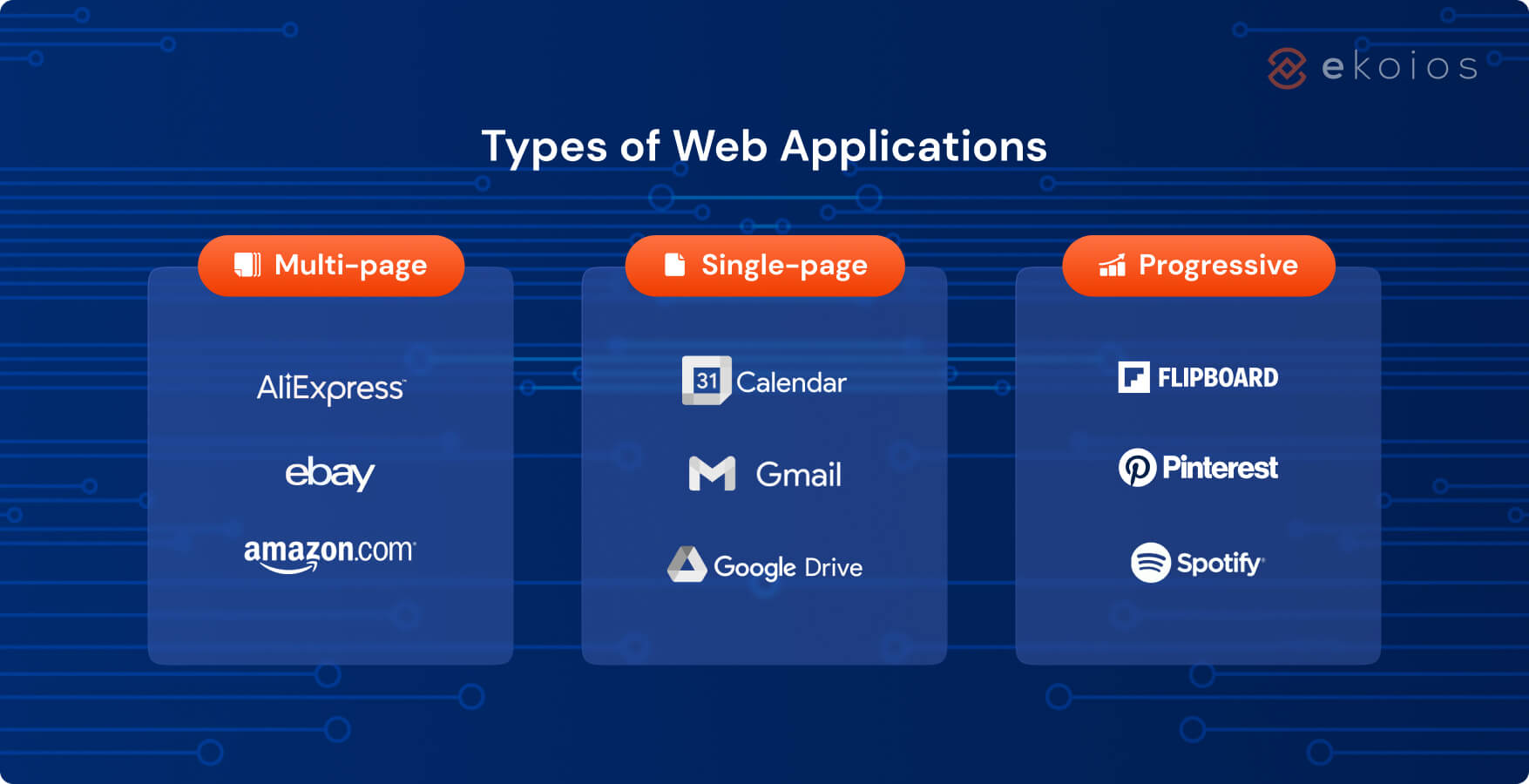
3. Web App Complexity
The complexity of your web application will have a significant impact on the development cost. There are generally three levels of complexity, with key functions highlighted in the following table:
| Complexity Level | Simple | Medium | Complex |
|---|---|---|---|
| Functions | All Simple functions, plus: | All Medium functions, plus: |
And as you might expect, the more complex your web app ideas are, the higher the development time and cost will be. Work with your development team carefully from the discovery phase to determine which functions are necessary to achieve your business goals, while staying within budget constraints.
4. Web applications technology stack
A tech stack is a combination of programming languages, databases, and frameworks used to create a specific application. In the case of web apps, the typical technology stack includes:
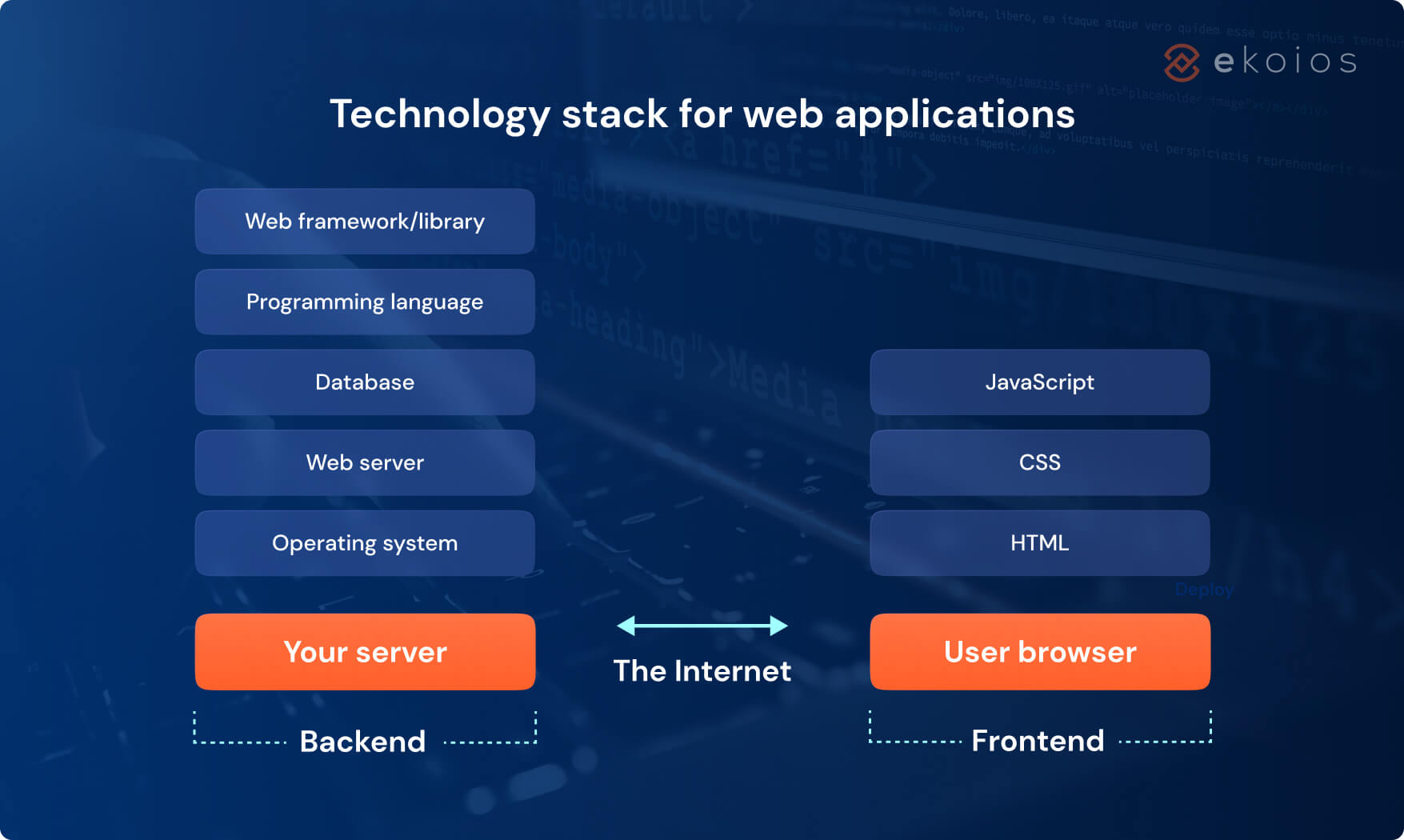
It’s important to clearly define the growth potential, security requirements, and actual budget so you can select the most suitable stack for your web application. Let’s walk through some of the most popular names:
🔸 Frontend: HTML, CSS, JavaScript (ReactJS, VueJS), Angular
🔸 Backend:
- Operating systems: Window, MacOS, Linux
- Web servers: Apache, Nginx, IIS
- Database: MongoDB, AWS, Firebase
- Programming languages: JavaScript (Node.js), PHP, Python
- Frameworks: Laravel, Django, Ruby on Rails
5. UI/UX Design
A well-designed UI/UX can make your web application more intuitive, user-friendly, and visually appealing, which can lead to increased user engagement and retention. On the other hand, a poorly designed UI/UX can frustrate users, cause them to abandon your website, and harm your business reputation.
Discover the essence of product design and experience our agile approach firsthand → Here
There are 2 ways to get your app designed: using templates or custom design services. With the latter more expensive than the former, the price difference also depends on your app’s complexity, design style, number of elements required, animation & so on.
🔸Dive deeper into our blog to discover all the factors that can impact the web redesign cost
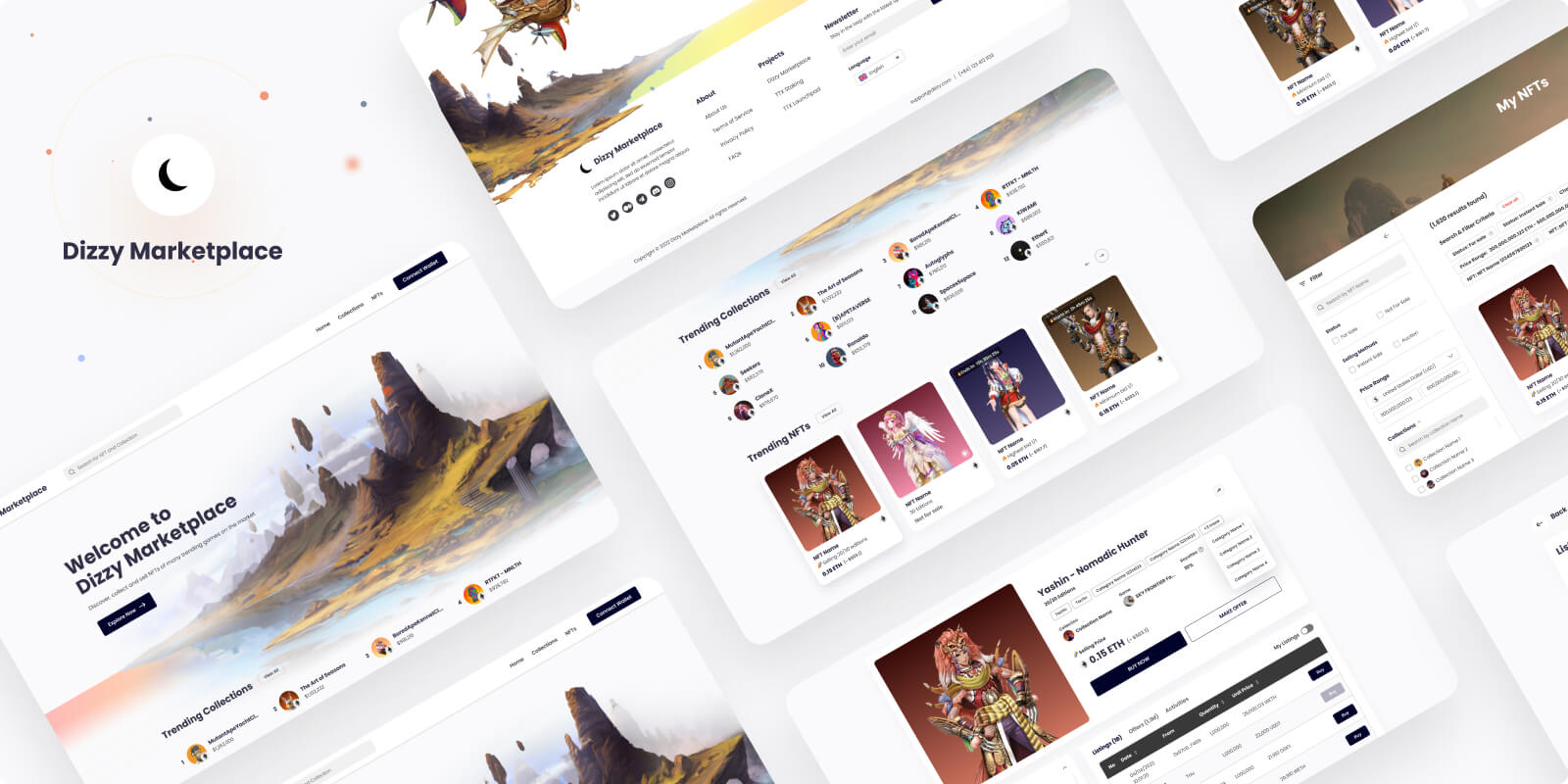
6. Project timeline
The quote for projects with tight deadlines is usually much higher than those with reasonable timelines. Since companies’ development resources are limited and reallocation will cost them extra, not to mention the decline in quality for rushed projects. Make sure to plan ahead and estimate the timeline for the entire project to ensure a successful outcome while keeping costs under control.
7. Web Development method
When it comes to web application development, there are three options.
- Build an in-house team: It’s the obvious choice for close management and high-quality development, but it can be costly due to expenses such as hiring, onboarding, and office space. Additionally, having full-time web developers means paying them regularly, regardless of the amount of work available. While the method is ideal for large companies where internal communication is crucial, it may not be the best option for small businesses and startups.
- Working with freelancers: It’s the cheapest alternative, but it can be unreliable. Freelancers may not provide the best development quality or deliver the project on time, as they often work on multiple projects at once. If you choose to work with freelancers, prepare to be their manager down to the smallest detail. They are best suited for small, urgent fixes or simple programming tasks, but not an entire web application.
- Outsource to another company: It’s the life hack of the decade! Software outsourcing companies have the ability to fully develop your app from idea to final product, while you only need to pay for the agreed-upon quotation or the actual working hours. For businesses residing in regions with expensive web app development costs, outsourcing to another region can save significantly – the only drawback is potential management hiccups and time zone differences.
| Build an in-house team $$$ | Work with freelancers $ | Outsource to another company $$ |
|---|---|---|
| Pros: Easy management High work quality | Pros: Low price Available immediately | Pros: Reasonable price High work quality Long-term partnership |
| Cons: Long recruitment time High expenses | Cons: Require strict management Quality not guaranteed | Cons: Management difficulties Time difference |
🔸 Read more: Software development company in Vietnam can help startups save costs
8. Development location
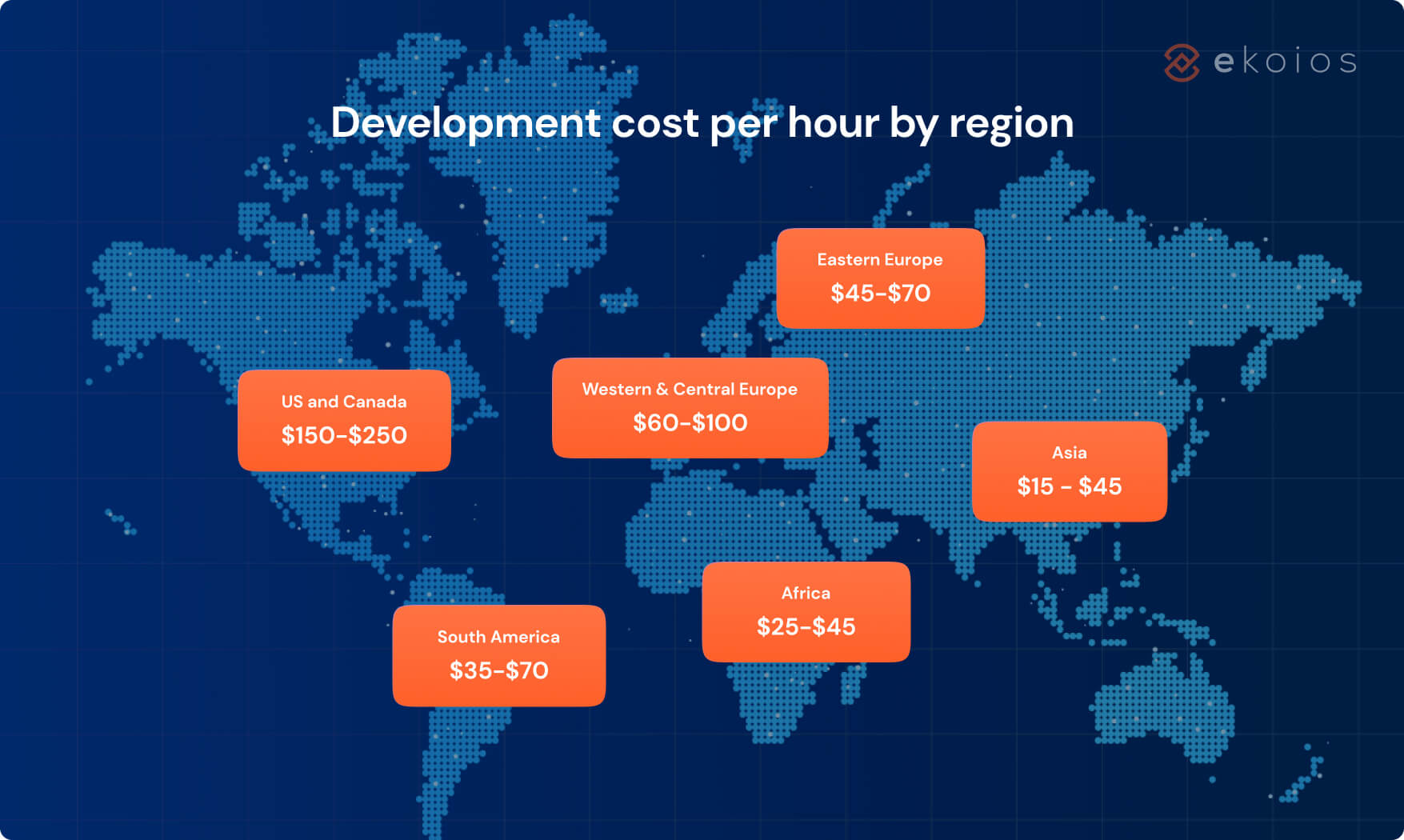
Location plays an important part in deciding the budget for your web application. Take a look at the average hourly rates in 6 main software development hubs worldwide: the US and Canada, South America, Western and Northern Europe, Eastern Europe, Asia, and Australia, and do the math yourself!
The average web app development costs
Now that we’ve reviewed the factors that influence the web application development cost, let’s get as close to the accurate figure as possible. Remember the app complexity table earlier? We will add in the time and cost estimation with the average rate in Asia, $30 per hour, to get the approximate cost.
| Complexity Level | Simple | Medium | Complex |
|---|---|---|---|
| Time estimation | 3-6 weeks | 2-3 months | 4-6 months |
| Cost estimation (USD) | $30,000 - $60,000 | $80,000 - $120,000 | $150,000 - $250,000 |
| Functions | All Simple functions, plus: | All Medium functions, plus: |
🔎 Need some concrete examples? We’ve got you covered.
To build an e-commerce web application like Amazon, eBay, or AliExpress, buyer features such as registration, shopping carts, payment gateways, product information, and a catalog with simple search and filtering are required. It’s also worth including features for sellers, such as product management, advertising, order information, and so on. The approximate cost for all of these will range from $60,000 to $120,000, depending on the list of features.
🔸 Read our case study for NFTify: Full-cycle development for the leading NFT Marketplace solution
A travel app like Expedia or TripAdvisor makes it much easier to navigate new destinations, such as purchasing transportation tickets, making lodging reservations, exploring nearby attractions, and so on. Registration and login, a search engine with filters, bookings, chats with hosts, ratings, reviews, and notifications are the main features of this app type.
The cost estimation? is $40,000 to $80,000.
🔸 Read our case study: Travala – the first Web3-powered application for travel
Tips to optimize web development cost
1. MVP first, scale later
The minimum viable product (MVP) model is a smart strategy if you have limited resources to afford a complex web application right away. By starting with a simple product, you can get user feedback on what features they would like to see in your app and gradually build them in as the project becomes profitable. This approach provides you with real data and insights to guide your decision-making process.
2. Use templates and third-party services
You don’t have to develop every single feature. Let’s say your web application needs a map – and using Google Maps API is a no-brainer, instead of remapping the entire world yourself. The market for third-party services has been flourishing with solutions you can easily customize and integrate inside your app, at a cost only a fraction of what you will spend developing from scratch.
And if you’re in the Web3 business, do check out Ekotek’ diverse stack of white-label solutions, from DeFi to Games and NFT!
3. Outsourcing to a low-cost region
The method has become immensely popular in recent years, as it allows businesses to access top-quality talent at a fraction of the cost of hiring locally. Many Asian countries, such as India, the Philippines, and Vietnam, offer highly skilled developers for an hourly rate of under $45, while their counterparts in Western countries can charge up to $250!
🔸 Read more: Why Vietnam is the go-to destination for software development outsourcing?
4. Manage projects the agile way
Two popular project management methodologies in software development are Agile and Waterfall, suited for different types of projects. While Waterfall is a linear system that requires the team to complete each project phase before moving on to the next, Agile encourages the team to work on different phases simultaneously.
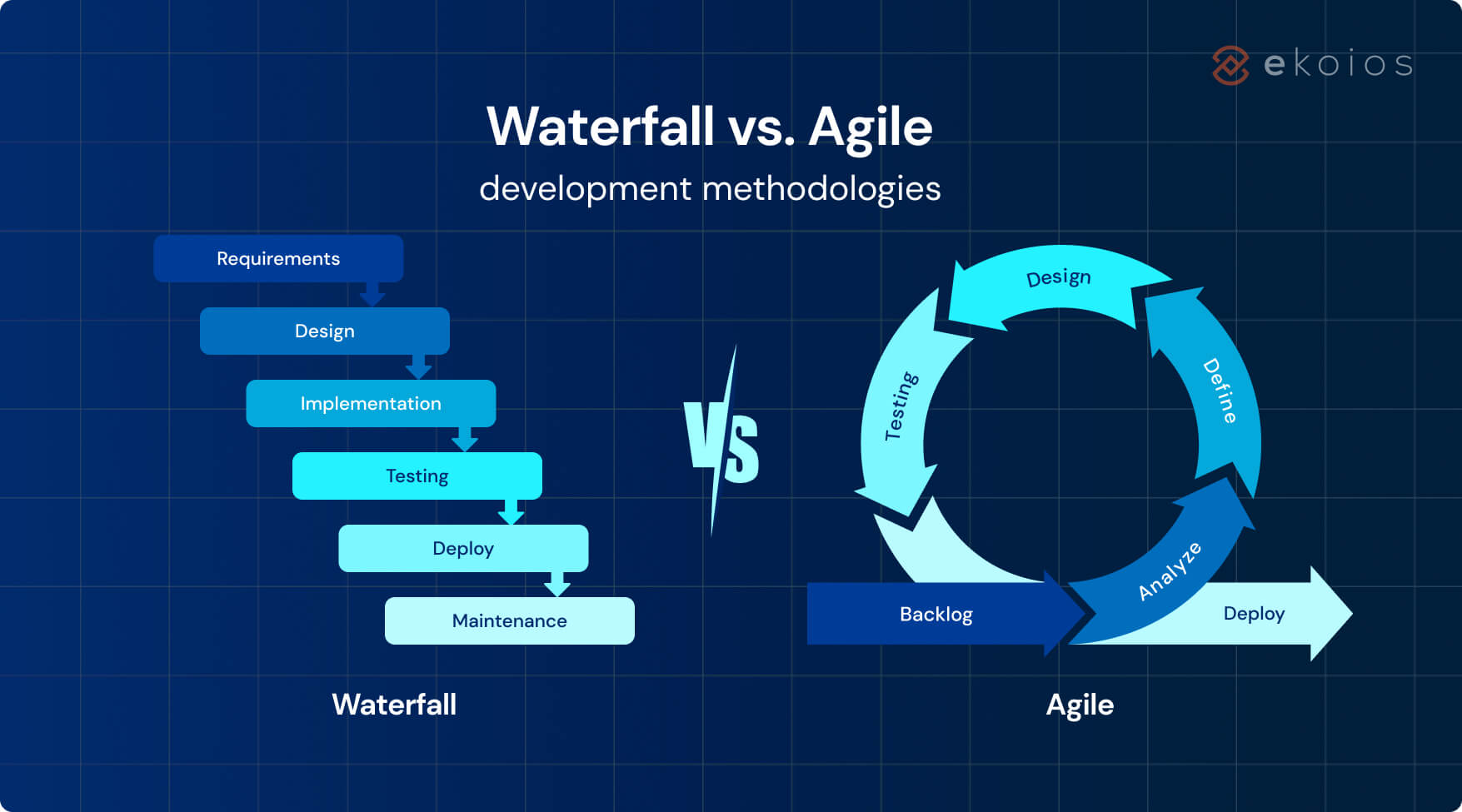
Agile project management is an iterative approach that emphasizes continuous releases, incorporating technology updates and customer feedback throughout the process. The ability to make adjustments during each release promotes flexibility and speed, saving significant resources for the business.
How project estimation works at Ekotek Technology
At Ekotek, we approach every project as our own. We strive to identify all user needs to create solutions that meet them best, while keeping costs within budget. This is made possible by our cross-functional team and an agile yet rigorous software development process including business analysis, solution design, UI/UX, development, QA, and post-launch support.
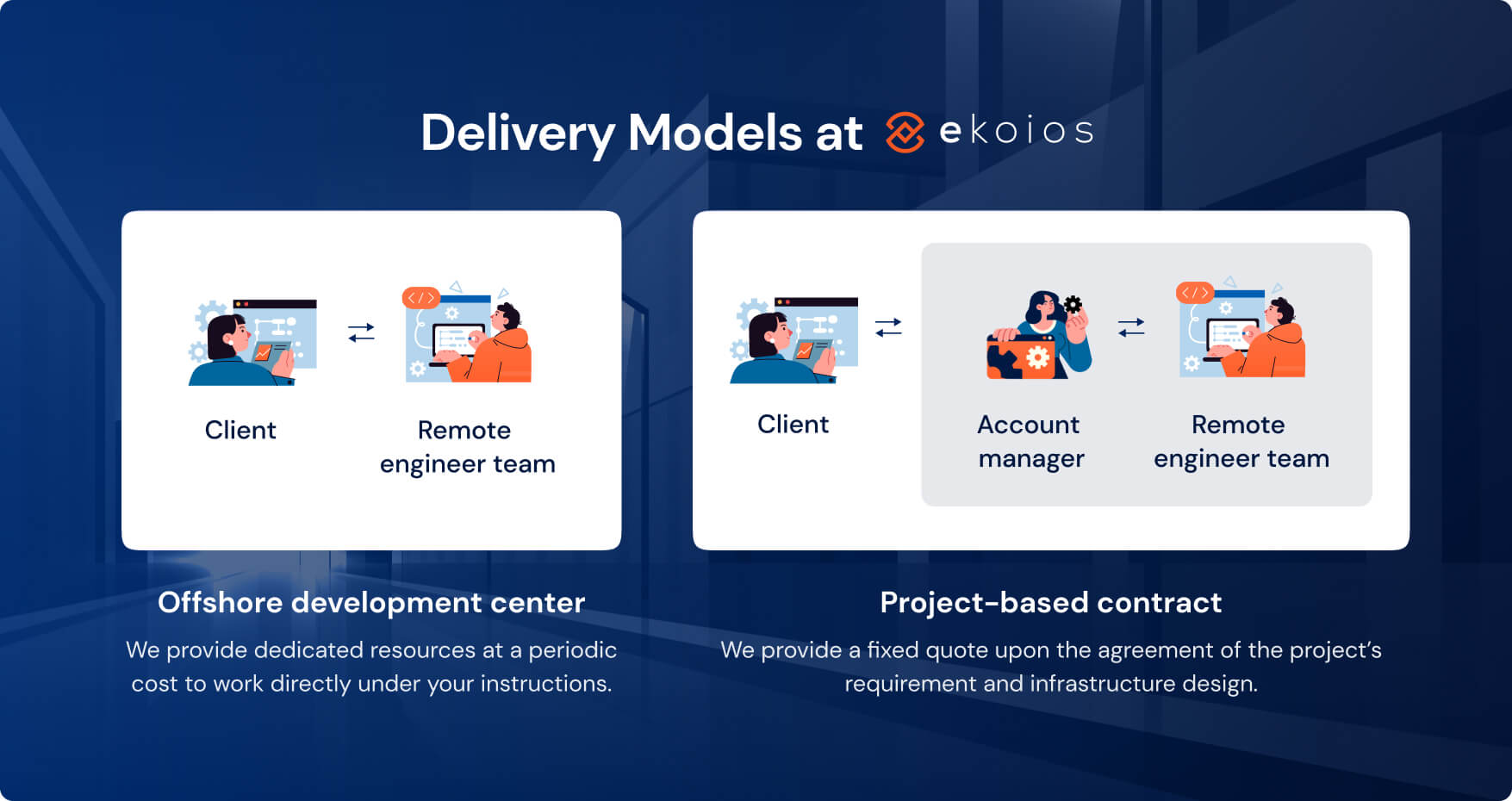
Ekotek offer two models for project delivery: Offshore development center (ODC) and Project-based. If your project is still in the discovery phase, the ODC model is ideal for getting expert insights, adapting quickly to changes, and having complete control over your task list. But if everything is already set in stone, the project-based model works best as it requires minimal supervision and guarantees little to no excessive budget, time, and resources.
Ending words
Developing a successful web application involves multiple stages and professionals, with various factors influencing the total cost. Hopefully, this article has given you an overview of all the options available – and it’s all up to you to select the most suitable path.
If you are currently exploring the outsourcing option, or looking for a quote for your web application – don’t hesitate to drop us a message! We’re always happy to provide consultation, estimation, and development resources that set your project up for success.
- 1
- 2
- 3
- 4
- 5
- 6